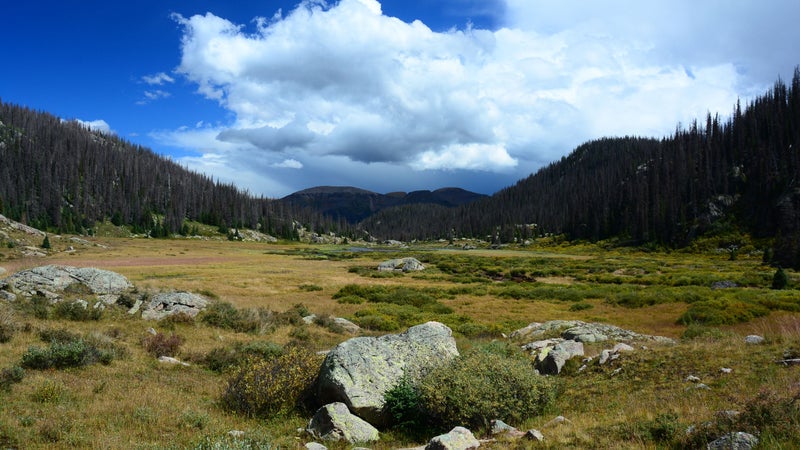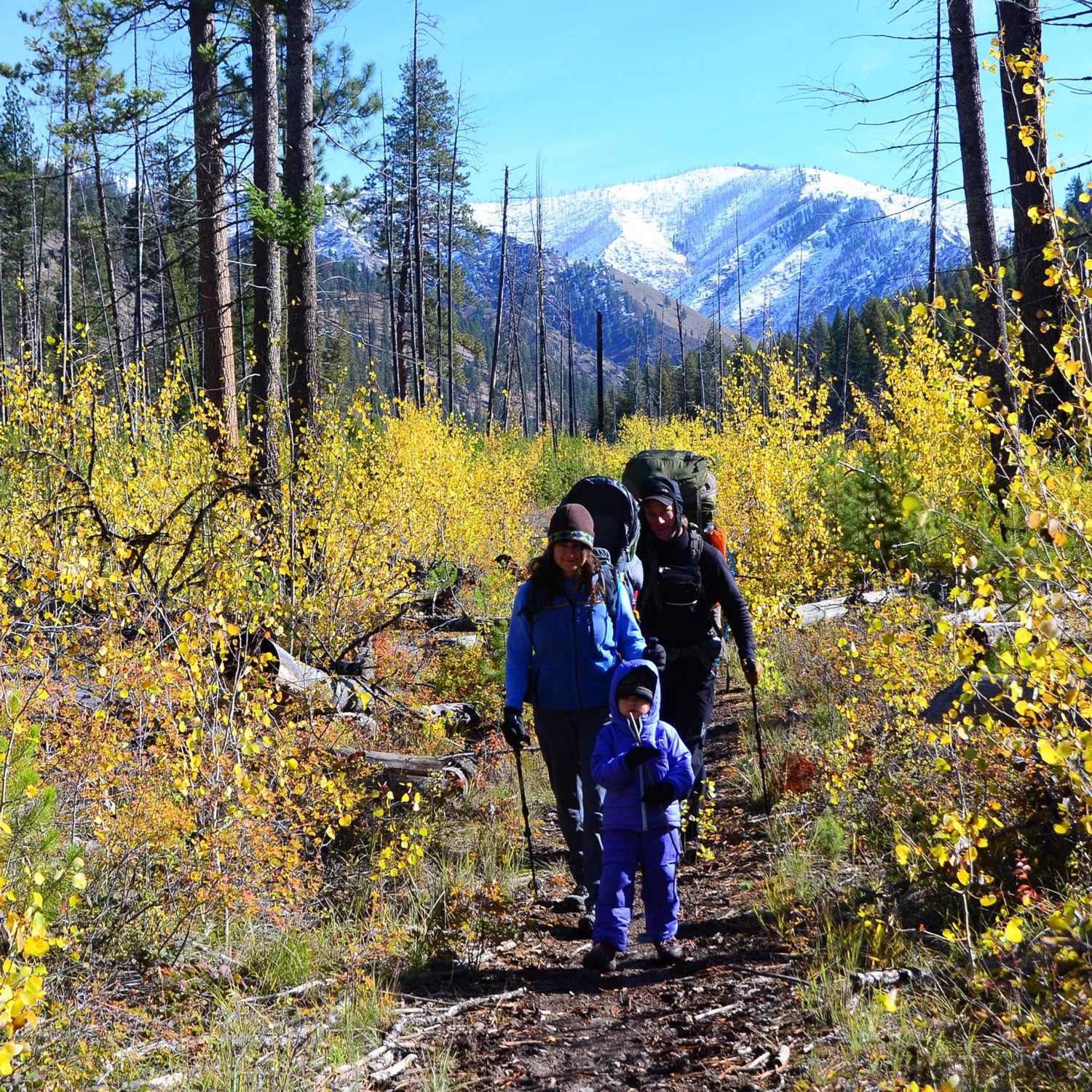“Ryan and I had been dreaming of this moment for months,” Rebecca Means wrote in a 2010 journal entry as her husband landed their aluminum boat on a beach in Everglades National Park. “It’s the beginning of a grand adventure, the culmination of so much work!” She was about to step onto the most remote spot in their home state of Florida. It was the first stop on what they were calling Project Remote, a quest to visit the most remote spot in each of the 50 states.
Then the couple went ashore. The sand was crisscrossed with tracks from someone dragging a cooler. Motorboats whizzed past on the Gulf of Mexico. People fished. A ship from Princess Cruises went by. It was the first in a string of disappointments in what has become an 11-year project.
“You cannot get more than five miles from a road within the vast majority of America’s wilderness,” says Ryan, an ecologist with the Tallahassee, Florida–based nonprofit Coastal Plains Institute. Less if you count trails and cabins. He and Rebecca, a wildlife biologist also with the institute, are the only people to have stood at the remotest coordinates in almost all of America’s backcountry. The two banter back and forth as they frame their shared disappointment differently. Her bubbly enthusiasm tries to put a positive spin on Ryan’s inclination to call things “bullshit,” and his easygoing surfer-dude accent carries an edge of not-easygoing cynicism. But his voice loses the edge for a moment when he reminisces about the day in 2009 that sparked .
“I was walking down a very crowded Florida beach on a training hike,” Ryan says, “and I was in my late thirties. Something was welling up inside me. I knew I wanted to do something grandiose that’d never been done, and then I thought, ‘How can I get as far away from this circus as possible? Remote.’ And the word keep reverberating in my head over and over.” He and Rebecca, as wildlife scientists and serial backpackers, decided they would stand at the most remote point in every state and document the wildest parts of our national wildernesses.
Those who head into the backcountry—hunters, hikers, climbers, bikers, paddlers, and fishers—do so to feel remote, and a spreadsheet that says we’re not getting away as far as we think is sobering.
The first hurdle was to define remoteness. The Means decided fuel-burning vehicles and industry affect the environment and the subjective feeling of isolation more than hiking trails, so roads and towns would count against a point’s measure of remoteness, while footpaths wouldn’t. “We’ve defined remoteness quantitatively so that we can make comparisons state by state,” says Ryan, acknowledging that they might have missed out on a more remote-feeling spot in one state or another because they focused on roads and towns. “There are so many ways remoteness can be defined,” he says, “but they all have pitfalls and difficulties associated with them.”
Rebecca, a pro with the graphical information system (GIS) satellite cartography tool, calculated the coordinates in each state farthest from roads and settlements. The Means began hiking to them and recording data, like whether the spot had cell service and visible human impacts. “We’ve been in lightning storms, snowstorms, hailstorms,” Rebecca says. “Extreme cold, extreme heat. We haven’t had a real vacation since 2009.”
The Means began the project in Florida with high hopes. But things quickly went downhill.
Four miles from a road and just a few feet off a hiking trail, Ryan found Tennessee’s remote spot. In the couple’s journal, he wrote, “I couldn't help but wonder if this place was truly remote, and whether the presence of an Appalachian Trail shelter should skew the remote spot calculation. As if that weren’t enough, two hikers emerged from the shelter to greet us. This made me feel queasy.” Next was South Carolina. On a sandy barrier island in Cape Romain National Wildlife Refuge, a lighthouse blinked nearby. A lost flip-flop and abandoned oil containers rotted slowly in the sun. Ryan pulled out a phone and, to prove a point, made a call. Like most remote spots, South Carolina’s had cellphone coverage. “After those three states, we realized you can’t get very far away from people, their effects, their influences, their footprints,” Ryan says.
Now, after 35 states, the Means' data seems to show that the wilderness is too built up to consider wilderness anymore. The remotest spot in America’s lower 48 is in Wyoming’s Yellowstone National Park, 21.5 miles from a road, a half-mile from a privately owned cabin, and a half-mile from a foot trail. “It wasn’t a single event that solidified our disappointment,” Ryan says. “It was the gradual realization that nowhere in the United States, apart from Alaska, stood up to what most outdoor-loving people would accept as being truly remote. Of the 35 remote spots we’ve stood at, we’ve found signs of human presence at every single one. We calculate these remote locations and go to them, and then hear a motor in the distance or see a cabin a mile away.” He says something that begins as a laugh and ends as a sigh, “Feeling remote isn’t actually being remote.”

Funding Project Remote themselves, the Means expect to wrap up the last 15 states within two to three years. Early on, they hoped Project Remote would convince legislators to push through a law saying there’d be no net gain of roads in public lands—but that prospect is increasingly looking like a pipe dream.
Those who head into the backcountry—hunters, hikers, climbers, bikers, paddlers, and fishers—do so to feel remote, and a spreadsheet that says we’re not getting away as far as we think is sobering. “Go hiking in the wintertime if you want to feel remote,” Rebecca says. “There are still places, for sure, where you can go out and feel isolated, and seasonality has a huge impact on that.” Alaska and Canada, Ryan adds, are two of the last places that qualify as truly remote without the need for any subjective justifying. But the two are disappointed at what their project has proved.
“Being an American is as much about the tenets of freedom as it is about wilderness,” Ryan says. “It feels like we’re not America anymore.”


